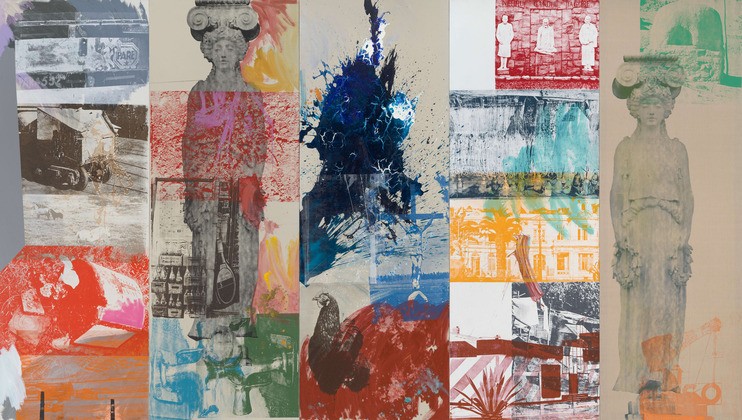The Rauschenberg Overseas Culture Interchange, Robert Rauschenberg
One of the most ambitious and wide-reaching artistic interchanges of the late-20th century
This entry has expired.

If the attitude of ROCI is going to work, we are dependent on a one-to-one contact with as many people as possible because the most dangerous weapon we have is a lack of understanding. — Robert Rauschenberg, 1986
Between 1984 and 1991 Robert Rauschenberg undertook a monumental cultural exchange programme to foster mutual understanding between different cultures through artistic expression. The Rauschenberg Overseas Culture Interchange (ROCI), pronounced ‘Rocky’ after the artist’s pet turtle, foregrounds his conviction in art as a force for positive social change, along with the role of travel as a key catalyst for his characteristically experimental approach to materials and techniques.
Spanning the entirety of the seven years of ROCI’s intense creative production, the exhibition at Thaddaeus Ropac London encompasses canvases, sculptures, cardboard works, neon light, photogravures and textiles, as well as an example of the artist’s earliest metal paintings. Presenting works directly from the Robert Rauschenberg Foundation, this is the first gallery survey dedicated to ROCI since the conclusion of the project in 1991. The ROCI works, many of which are also shown publicly for the first time since the project ended, are contextualised with archival materials. A selection of the artist’s black-and-white photographs, taken as source material during his travels and used for the silkscreen images in the ROCI works, are also included.
Acutely aware of contemporary global tensions, Rauschenberg sought to realise the project primarily in countries where access to contemporary Western art and freedom of artistic expression were limited or non-existant. Working with a small team, he undertook a research trip to each of the participating countries to visit sites of interest and meet with local artists, artisans and prominent cultural figures. He then returned to his studio in Captiva, Florida, where he translated these experiences into a new body of work, which was subsequently exhibited with a retrospective of his pre-existing work and a selection of ROCI pieces from the previous countries. Each iteration of the exhibition consequently facilitated dialogue between the different ROCI countries through the works assembled.
At the conclusion of the ROCI project, Rauschenberg had created more than 125 paintings, sculptures and editioned objects and over two million visitors worldwide had seen a ROCI exhibition. This exhibition, presented in London at another moment of deep global uncertainty, revisits ROCI to consider the power of international collaboration and cultural exchange in the 21st century. The exhibition is accompanied by an illustrated catalogue featuring an interview with contemporary artist Alvaro Barrington.
Further information: Robert Rauschenberg | ROCI | Thaddaeus Ropac
Venue details
- Address:
- Thaddaeus Ropac
- Ely House
- London
- , W1S 4NJ